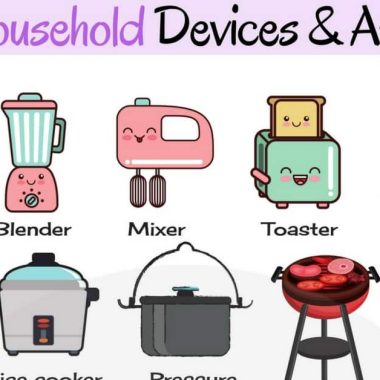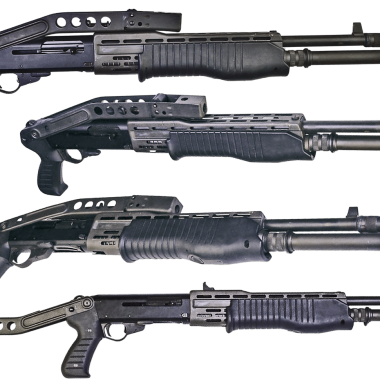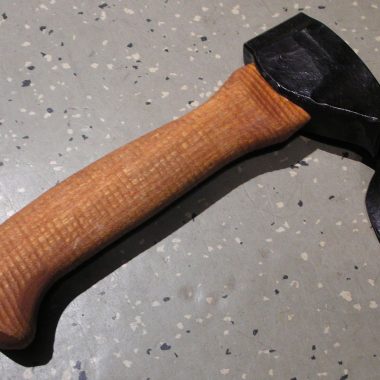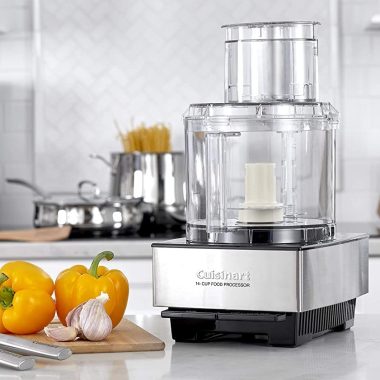The lock and key are the primary driving force behind the development of security. A key is a crucial security component that aids in keeping your home, cars, and other belongings safe from intruders.
If you’re like most people, you don’t think much about keys in general. However, you most likely use a variety of keys on a daily basis.
Consider this: you have a house key, a car key, and most likely a key for work or something else around your house, such as a greenhouse or shed.
Your lock can’t simply be opened without a key. In a lifetime, everyone has owned at least one key.
It is crucial to have a fundamental understanding of keys and the different types of keys that are available on the market for owners of a home, business, or car.
These simple items that we don’t give much thought to are what we rely on to protect our belongings and loved ones from attackers.
However, because we don’t think about keys very often, it’s not uncommon for you to be unaware that several different types of keys are available.
Today, there is a wide variety of locks and keys available. House keys come in different varieties and styles, each designed to provide different levels of security and functionality.
It’s critical to understand at least the most common types of keys, which we’ll go over in detail.
When it comes time to replace or upgrade your locks, you’ll know exactly what key you need.
Here is a list of some of the typical different types of keys to look into:
1. Pin Tumbler Keys
These are the most common of the different types of keys used in residential and household doors, padlocks, and many other applications.
They have a series of cuts along the blade corresponding to the lock’s pins. A pin tumbler key is designed to operate a pin tumbler lock.
When the key is inserted and turned, the pins align at the shear line; the correct key is inserted so you can turn the lock’s cylinder.
This action allows the locking mechanism to disengage, either locking or unlocking the door.
The unique pattern and depth of cuts on the key are what make the key specific to a particular lock.
If the key’s cuts match the corresponding pins’ heights within the lock, the key will successfully operate.
2. Skeleton Keys
A skeleton key has been filed or cut down to open multiple locks in a particular set or group of locks.
It is a simple, flat, rectangular blade primary key with minimal cuts, bypassing the need for a specific key for each lock in a similar group.
Skeleton keys are often associated with older locks. These keys were designed to fit into a wide range of locks, making them versatile but could be more secure.
The name “skeleton key” is derived from having a bare or simplified structure compared to regular keys.
Skeleton keys were relatively standard early, especially in older homes and buildings with traditional locks.
These keys were often used for convenience, allowing one key to open many doors within a building.
However, this convenience also posed a security risk, as possessing a skeleton key could grant access to multiple areas.
Modern locks have evolved to incorporate more advanced and secure mechanisms, making skeleton keys obsolete for the most part.
Lock manufacturers have removed designs that a simple skeleton key could easily manipulate.
Instead, modern locks utilize more complex pin configurations and critical techniques to enhance better security.
It’s essential to prioritize security using up-to-date, secure lock systems that cannot be easily opened with a skeleton or similar generic keys.
3. Master Keys
A master key typically refers to a key that can open multiple locks within a specific system.
It is a highly privileged key, often held by designated individuals like building managers or maintenance staff.
Unlike other different types of keys, the master key is very versatile as it is designed to open multiple locks, each of which may also have its unique individual key.
Master key systems are standard in buildings where different access levels are needed.
For instance, a building manager may have a master key that can open all doors in the building, while individual tenants or employees have keys that only open specific areas.
While master keys provide convenience and ease of access, they pose a significant security risk.
If a master key is lost or stolen, it could grant unauthorized access to different areas in a building or facility.
Developing an effective master key system requires careful planning and design to ensure that the right balance between security and accessibility is maintained.
It is also essential to use master keys responsibly and ensure they are adequately safeguarded to prevent unauthorized access.
4. Dimple Keys
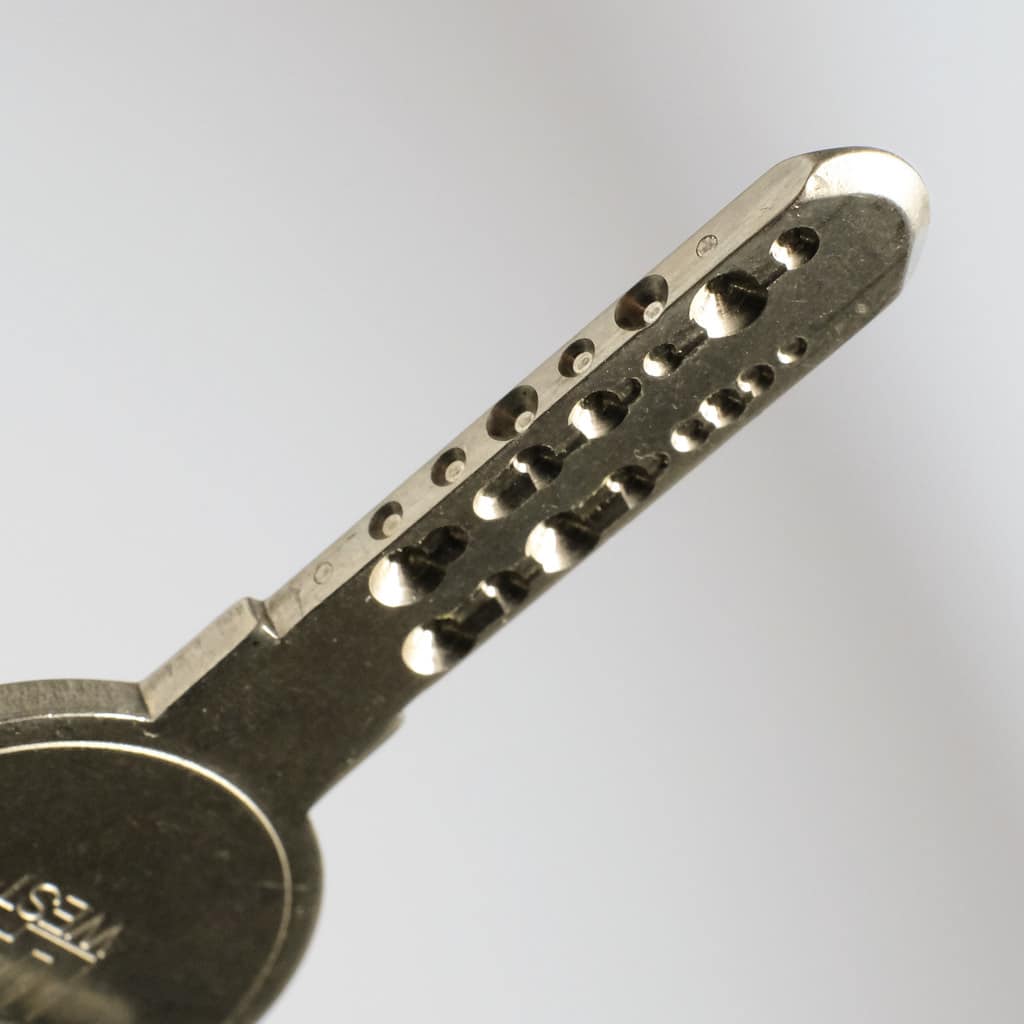
Dimple keys are commonly used in modern locks, particularly in Europe and other regions.
These keys have a unique design with symmetrical and asymmetrical dimples or holes on either side, allowing them to fit into corresponding pins inside the lock.
Dimple keys have a flat, rectangular blade with cone-shaped dimples drilled into the blade’s surface on one or both sides.
The dimples align with the pins in the lock. The pins in the lock are set at varying heights. The dimples on the key correspond to these pin heights.
When the key is inserted into the lock, the dimples align with the pins, allowing the key to turn and unlock the mechanism.
Dimple keys offer higher security than traditional pin tumbler keys because of their unique dimple design. They are easier to duplicate with authorization.
Duplicating a dimple key requires specialized equipment and expertise, making it more difficult for unauthorized individuals to make copies.
Dimple keys are commonly used in homes, businesses, and vehicle locks.
Thus, Dimple keys provide improved security due to their complex design, and they are more resistant to picking techniques.
It’s important to note that while dimple keys offer enhanced security features, no lock is entirely immune to tampering.
Always use additional security measures and best practices to improve your overall security.
5. Tubular Keys
Tubular keys are also among the different types of keys commonly used in various locks, particularly in vending machines, bike locks, coin-operated laundry machines, and other similar applications.
These keys are known for their distinctive circular or tubular shape and operate tubular pin tumbler locks.
Tubular keys are shaped like tubes or cylinders, with a hollow circular shaft.
The key’s blade has a series of cuts or notches around the edge, corresponding to the pins inside the lock.
The cuts on the tubular key align with these pins, allowing the key to turn and unlock the lock.
Tubular locks are designed to be more resistant to picking and tampering, making them a popular choice for good security.
Duplicating tubular keys also requires specialized equipment and expertise.
6. Laser-Cut Keys
Laser cut keys, also known as sidewinder or internal cut keys, are a type of high-security key used in modern vehicles and some commercial and residential locks.
They are cut using a laser instead of traditional key-cutting methods, which provides a more precise and complex key design.
This technology offers increased security and makes it more difficult for unauthorized individuals to duplicate the key.
Laser-cut keys have a unique and intricate pattern of cuts on both sides of the key blade, resembling a winding or zigzagging groove.
Thus, laser-cut keys provide a higher level of security due to their intricate and precise design.
7. Electronic or Smart Keys
Electronic or intelligent keys, known as proximity keys or key fobs, are advanced key systems used in modern vehicles and other applications.
These keys utilize electronic technology for added security, convenience, and functionality.
Unlike traditional mechanical keys, electronic keys often incorporate microchips and radio frequency identification (RFID) technology to communicate with the vehicle’s onboard computer system.
The microchip in the key contains a unique identifier and encryption to enhance security.
Smart keys often come in the form of a key fob, which includes buttons to lock, unlock, or start the vehicle remotely.
Some key fobs allow control over other vehicle features, such as opening the trunk or setting off the car.
Electronic keys offer proximity-based access, allowing the user to unlock or start the vehicle without inserting the key into the ignition.
There is an auto-detect of the key’s presence within a specific proximity range, enabling keyless operation.
This technology makes it difficult for thieves to duplicate the key or start the vehicle without authorization.
Many electronic keys are integrated with an immobilizer system, preventing the vehicle from starting if any unauthorized key is used.
In case of a lost electronic key, reprogramming or replacing the key is a standard solution.
8. Bump Keys
A bump key, also known as a bumping key or 999 key, is a specially crafted key used for a lock-picking technique.
It is simply a regular key that has been modified. Unlike the other different types of keys, this technique is a lock manipulation used to open pin tumbler locks.
Bump keys are typically associated with traditional pin tumbler locks.
The cuts on a bump key are made to the maximum depth, usually aligning with the most extended pins in a lock.
The idea is that when the key is inserted into the lock and then “bumped,” the force applied causes the pins to jump and briefly separate, allowing the lock to be turned and opened.
However, it’s important to note that bumping still requires practice and skill to be successful.
The potential limitation of this type of key is that Bumping may only work on some locks, especially high-security locks or those with additional anti-bumping features.
Some locks are designed with security pins or other mechanisms to resist bumping.
Bump keys also pose a security risk because unauthorized individuals can use them to gain access to properties.
In many jurisdictions, owning or using bump keys for non-professional or unauthorized purposes may be considered illegal or unethical.
Locksmiths and security professionals typically use bump keys for legitimate purposes, such as lock servicing or emergency access.
9. High-Security Keys
Unlike other types of keys, high-security keys and locks are on a different advanced security system.
They are designed to provide a higher level of protection against unauthorized access, picking, bumping, drilling, and other forms of tampering.
These systems are often used in commercial, industrial, and residential applications where enhanced security is essential.
High-security keys have complex and unique keyway designs, often featuring intricate patterns, curves, and angles.
These designs make it challenging for unauthorized individuals to replicate the key.
High-security keys are typically also made from durable materials such as hardened steel, making them resistant to wear and tear.
High-security locks often incorporate advanced locking mechanisms such as multiple sets of pins, sidebars, sliders, biometric authentication, or other electronic components to increase security and resistance to bumping or picking.
Another fantastic feature of this key is that they are designed to be drill-resistant, with hardened materials and specialized designs to deter drilling attacks.
However, high-security locks and keys are more expensive than standard locks due to their advanced features, technology, and security level.
Skilled professionals typically perform the installation.
10. Restricted Keys
Restricted keys refer to keys whose duplication is controlled and restricted by the manufacturer, locksmith, or a designated authority.
These keys are part of a high-security system to enhance security and control access to certain areas or assets.
Authorized duplication of restricted keys typically requires essential registration and verification of identity to ensure that the person requesting duplication has legitimate authorization.
Restricted keys also have serial numbers or other identification markings, making it possible to trace key duplication back to the source.
Restricted keys are commonly used in sensitive environments such as government facilities, commercial buildings, healthcare institutions, educational facilities, industrial complexes, and other areas where controlled access is crucial.
Locks that use restricted keys typically have advanced locking systems that further contribute to the overall security, making them more resistant to picking, bumping, drilling, and other unauthorized access attempts.
11. Card Keys
Card keys, also known as key cards or access cards, are physical or electronic keys used to control and grant access to secured areas or facilities.
They are a common form of access control in various settings, including hotels, offices, educational institutions, and commercial buildings.
Card keys provide a convenient and secure way to manage access. Card keys are among the most popular of the different types of keys.
Card keys utilize technology, typically as a plastic card embedded with a magnetic stripe, RFID (Radio-Frequency Identification), NFC (Near Field Communication), or smart chip.
Card keys work with an access control system, which manages the granting or denial of access based on the information stored on the card.
These keys are encoded with unique identification data and access permissions corresponding to the user’s role or requirements.
In an organization where a card key is used, different users are granted different levels of access based on their role or authorization.
Access levels determine which areas a card key holder can enter.
Card keys also come in different types, such as Magnetic Stripe Cards, RFID and NFC Cards, Smart cards, Proximity Cards, etc.
When a card key is Lost or Stolen, it can be quickly deactivated in the system, rendering it useless for access.
12. Biometric Keys
Biometric keys, also known as biometric authentication, are a form of access control and security mechanism that uses an individual’s unique biological or behavioral characteristics to verify their identity.
It is one of the different keys we have in the modern world. Biometric keys offer a high level of security and are increasingly used in various applications.
Biometric keys use biological or behavioral traits for identification, such as fingerprints, palm prints, hand geometry, iris patterns, retina scans, facial recognition, voice recognition, gait analysis, and even DNA.
Each person’s biometric traits are unique, making them an excellent choice for identity verification and access control.
Even identical twins have distinct biometric features. The authentication process involves:
- Capturing the biometric data.
- Converting it into a digital format.
- Comparing it against stored templates in a database.
- If there’s a match, your access is automatically granted.
Biometric keys provide a high level of security due to the uniqueness and difficulty of replicating biometric traits accurately.
Biometric keys offer a convenient and efficient way to enhance security and access processes.
As technology advances, biometric systems are becoming more sophisticated across different industries.
13. Combination Locks
A combination lock is a type of locking mechanism that requires the correct combination or code to be entered to unlock and open the lock. It’s famous for securing safes, lockers, luggage, and doors.
Here are some types of combination locks as they come in different types of keys.
- Mechanical Combination Locks: These locks have a dial or knob with numbers (usually from 0 to 9) marked on it. To unlock the lock, the user must turn the dial to specific numbers in a particular sequence to match the accurate combination. The series is usually unique and set by the owner.
- Electronic Combination Locks: These locks input the combination using electronic components like a keypad or touchscreen. Users are expected to enter the correct numerical combination code, usually a sequence of digits, on the keypad or touchscreen to unlock the device.
- Dial Combination Locks: This type of lock has a rotating dial that must be turned in a specific direction and to particular numbers in a sequence. The correct combination aligns the internal tumblers or pins, opening the lock.
- Digital Combination Locks: These locks have a digital display and buttons for entering the combination. Users input the correct combination by pressing the buttons corresponding to the digits of the mixture.
- Combination locks: They offer advantages such as not requiring a physical key, making it convenient, and reducing the risk of losing it. However, it’s essential to keep the combination secure and discrete.
14. Digital Key Safe
A digital key safe is a secure storage device designed to hold keys, access cards, or other valuable items while providing controlled access through a digital combination.
These safes are commonly used in homes, businesses, hotels, car rentals, and other places.
Using a digital key safe offers the advantage of controlled access, easy key management, and quickly retrieving keys or access cards.
However, it’s crucial to regularly update access codes to ensure your items are securely stored.
15. Magnetic Keys
Magnetic or magnetic stripe keys are one of the different types of keys. They utilize magnetic stripe technology for access control and security.
The technology is widely used in various areas, including hotel room keys, access cards, etc.
The magnetic stripe on these keys contains encoded information that a magnetic stripe reader can read to grant access or perform specific functions.
Information is encoded onto the magnetic stripe. The encoded information typically includes details like a unique identifier or access code associated with the user or their access privileges. If the encoded data matches a valid entry, access is granted.
While magnetic stripe technology has been prevalent for decades, it’s important to note that it has specific vulnerabilities, including susceptibility to skimming and cloning.
As a result, newer technologies like EMV chips and RFID (Radio Frequency Identification) are increasingly used to enhance card-based systems’ security.
16. Wafer Tumbler Keys
A wafer tumbler lock, commonly known as a wafer lock, is a type of lock mechanism that uses flat wafers as the key pins instead of traditional cylindrical pins.
The design of wafer locks is relatively simple but effective for low to medium-security applications.
A wafer lock consists of a plug (the part that turns with the key), a shell (the stationary housing), and a series of flat, spring-loaded wafers.
Each wafer has a notch cut out at various positions, and these notches align to form the shear line.
When you insert the key into a wafer lock, the notches on the key lift the wafers to the correct height.
As the key is turned, the notches align the wafers at the correct height, allowing the plug to rotate within the shell and unlock the lock.
It is also worth noting that these types of keys are generally less secure than more complex pin-tumbler locks.
Thus, high-security applications often use more advanced lock mechanisms, such as pin tumbler locks with security pins or electronic locks.
They also are similar to pin tumbler keys but have wafer-shaped tumblers instead of pins.
17. Garrison Keys
A garrison key is a type of key used to secure a garrison or a fortified military post.
In a military context, a garrison is a permanent installation or a fortified location where troops are stationed for defensive or security purposes.
The term “garrison key” thus refers to a specific key or a system of keys designed to control access to different areas within a garrison or military facility.
Access control is crucial in such environments to ensure security and restrict entry.
A Garrison key has a unique, complex design, making it applicable in high-security places. They are also easier to duplicate with authorization.
18. Abloy Keys
Abloy is a well-known brand that produces high-security locking systems, including keys and locks.
The Abloy Protec system is renowned for its advanced security features and patented rotating disc cylinder design, providing exceptional resistance against picking, bumping, and other forms of manipulation.
In other locks, the Abloy Protec uses a rotating disc mechanism instead of the traditional pin tumbler system.
The discs must be aligned in a specific pattern to allow the lock to turn and open.
The design and construction of Abloy Protec locks make them highly resistant to various forms of lock manipulation, making them one of the choices for high-security applications.
Abloy locks are also built to be durable and reliable, ensuring long-lasting security and minimal maintenance.
The abloy locks and keys are used in many places, from residential and commercial properties to critical infrastructure and government facilities.
Abloy keys are designed to work exclusively with Abloy locks, ensuring high security and key control.
If you have an Abloy key, it will only work with an Abloy lock that matches the specific key profile and system.
19. Paracentric Keys
Different types of keys? Paracentric keys are among the different types.
Paracentric key is used in high-security locks, particularly pin tumblers and sure tubular locks.
The term “paracentric” refers to the shape of the keyway, the slot in the lock’s cylinder into which the key is inserted.
A paracentric keyway has an irregular or which deviates from the typical straight or symmetrical keyways found in standard locks.
The rough shape enhances security by making it more challenging to pick the lock.
The design of a paracentric keyway also restricts the entry of picking tools and requires a specially designed paracentric key for successful insertion and turning.
Paracentric keyways provide an added layer of security because they make it more difficult for unauthorized individuals to manipulate.
As usual, the key’s cuts and angles must align precisely with the pin positions to achieve the correct shear line, allowing the lock to turn and open.
20. Dimpled Paracentric Keys
Dimple or “dimple cut” keys are used in high-security locks. It is a combination of both dimple keys and paracentric keys.
Dimple keys have a unique design with cuts or dimples on both sides of the key blade.
These dimples correspond to pins within the lock, which must align adequately to allow the lock to turn and open.
A paracentric keyway refers to the shape of the keyhole or keyway in the lock’s cylinder.
It typically features a narrow and intricate design with obstructions that make it more challenging for picking and manipulation attempts.
Combining dimple keys with a paracentric keyway creates a high-security lock system.
The dimples on the key align with specific pins within the lock, requiring precise positioning for the lock to open.
21. Mul-T-Lock Keys
This type of key is also among the many different kinds of keys. The mul-T-lock is a brand known for its high-security locks.
Mul-T-Lock is a prominent global manufacturer of high-security locks and access control systems.
They were established in 1973. Mul-T-Lock has since then gained a reputation for producing innovative and advanced locking solutions.
Mul-T-Lock cylinders are designed with advanced features, such as multiple locking mechanisms, pins, and other security elements, to resist picking, drilling, and other tampering attempts.
It also offers master key solutions, allowing for efficient locks only produced by ABUS.
ABUS provides high-security keys, often with additional features or technologies to enhance security and make duplication more difficult.
ABUS keys come in different types and profiles based on the specific lock system, such as cylinder locks, padlocks, and deadbolts.
Like many reputable lock manufacturers, ABUS emphasizes key control to ensure that only authorized individuals can duplicate keys.
ABUS keys also have a wide range of applications, which include residential, commercial, industrial, and automotive security solutions.
22. Rim Cylinder Keys
A rim cylinder key is one of the different types of keys designed to operate a rim cylinder lock.
Rim cylinder locks are commonly used in house entry doors, apartment doors, and particular commercial doors.
The rim cylinder is mounted on the door’s surface rather than installed within, making it easily accessible and visible.
The rim cylinder key is inserted into the keyhole of the rim cylinder lock to operate the lock.
When the correct key is inserted and turned, it engages the lock mechanism, allowing the door to be locked or unlocked.
Rim cylinder keys have a unique keyway design associated with the specific rim cylinder lock.
Locksmiths or key-cutting services can duplicate Rim cylinder keys using specialized equipment.
However, authorized duplication helps ensure that only authorized individuals can obtain duplicate keys.
Additionally, cylinder locks have security features like anti-picking, anti-bumping, and other mechanisms to enhance security and prevent unauthorized access.
23. Cabinet Lock Keys
Cabinet lock keys are specifically designed to operate locks commonly used in cabinets, drawers, or other types of furniture.
These types of keys are popularly used in offices, homes, or offices in homes.
These cabinet locks come in various styles and designs, each requiring a corresponding key for unlocking and locking.
Cabinet key locks come in different types, such as Pin Tumbler Cabinet Locks, Tubular Key Cabinet Locks, Warded Cabinet Locks, Electronic or Digital Cabinet Locks, Cam Locks, Filing Cabinet Locks, etc.
When selecting or using cabinet lock keys, matching the key to the specific type of lock is essential to ensure efficient functionality.
It’s also crucial to keep cabinet keys in a secure location and limit access to authorized individuals.
24. Padlock Keys
Among the different types of keys, these are one of the common ones. Padlock keys are keys specifically designed to operate padlocks.
Padlocks are portable locks typically used to secure items such as lockers, gates in houses or other facilities, storage units, and more.
The padlock keys are designed to fit the corresponding lock’s keyway and pins, allowing for the locking and unlocking of the padlock.
There are various key types for padlocks, including pin tumbler keys, tubular keys, disc-detainer keys, and more, depending on the type of padlock.
Locksmiths or key-cutting services can easily duplicate Padlock keys to create additional keys for authorized users.
However, advanced padlocks incorporate additional security features into the key or lock, such as anti-picking or high-security key systems.
It is, however, necessary for users to securely retain and manage their padlock keys to maintain access to their secured belongings.
25. Mortise Cylinder Keys
Mortise cylinder keys are keys designed to operate mortise cylinder locks. A mortise cylinder lock is commonly used indoors and in other fixtures.
The mortise cylinder is installed within the door, requiring a corresponding Mortise Cylinder Lock.
A mortise cylinder lock is a type of locking mechanism typically set into the edge of a door. It consists of a cylindrical body (cylinder) housing the lock mechanism.
Mortise cylinder keys have specific designs and profiles to match the keyway of the mortise cylinder.
The key is cut with corresponding notches that align with the pins or tumblers in the cylinder.
Mortise cylinder keys come in various types, including pin tumbler, dimple, and many more. It all depends on the specific design of the mortise cylinder.
26. Cam Lock Keys
A cam lock is also among the different types of keys. Cam lock key is a fastener often used in cabinets, drawers, and other furniture in houses or offices.
It typically consists of a cylindrical lock and a cam, metal, or plastic piece that rotates to secure or release the lock.
Some cam lock systems have master keys that can open multiple locks within a system. Master keys help build managers or those needing access to various locks.
Cam lock keys also often have specific codes or numbers associated with them. These codes are essential for ordering replacement keys that match the original lock.
However, always remember to prioritize security and proper management of cam lock keys to ensure the safety and security of your items.
27. Antique Keys
These are old or vintage keys, often with historical, aesthetic, or collector value.
They vary in design, material, and purpose, reflecting the era and culture in which they were produced.
Antique keys were used for various locks, including doors, cabinets, chests, and other items.
Antique keys come in various designs and styles, from simple and functional to highly ornate and decorative.
Designs may include intricate patterns, engravings, or shapes specific to a particular era.
Antique keys are also typically made of materials common to their era, such as iron, brass, steel, and even precious metals like silver or gold.
The choice of material often depended on the purpose and the individual’s status.
28. Double-Sided Keys
Double-sided keys have notches or cuts on both sides of the key blade.
These cuts correspond to the pin arrangements within the lock’s keyway, allowing the key to work in either direction when inserted.
Double-sided keys are symmetrical along their length, allowing them to be inserted into a lock with either side facing up. This symmetry is a distinguishing feature.
Double-sided keys can also offer increased security, as they often have more possible combinations due to the additional cuts on each side of the key. This makes it harder to duplicate or pick the key.
Double-sided keys are commonly used in various locks. The ability to insert the key in either direction also adds convenience and ease of use for the key holder.
Double-sided keys are a practical choice for enhancing security and convenience, especially when versatility in key insertion is valued, such as in residential or automotive lock systems.
29. Panic Bar Keys
A panic bar key, also known as a “panic device key” or “crash bar key,” It is among the different types of keys.
It is also a specialized key used to unlock or operate panic exit devices, commonly installed on commercial or public buildings.
These devices are emergency exit hardware designed to allow quick and easy egress during emergencies, such as fires or other hazardous circumstances.
The panic bar design ensures that individuals can rapidly exit a building in an emergency without manipulating traditional locks or knobs.
30. Switch Lock Keys
A “switch lock key” generally refers to a key used to operate a lock associated with a switch.
These locks control access to various electrical switches, panels, or other sensitive equipment.
The keys for switch locks are designed to fit and operate the lock mechanism associated with the switch, allowing authorized personnel to unlock or lock the switch as needed.
This helps maintain security, safety, and control over electrical systems and related equipment.
The specifics of switch lock keys can vary depending on the type and brand of the lock.
31. Mailbox Keys
Mailbox keys are keys used to unlock and access mailboxes, typically found in residential or commercial buildings, to store incoming mail until retrieved by the intended recipients securely.
These keys are specific to the lock mechanisms of mailboxes.
Different mailbox locks and keys include Cluster Box Unit (CBU) Keys, Parcel Lockers, Mailbox Key Duplicates, etc.
32. Push Button Lock Keys
Push button lock keys are keys used to operate the push button locks. These locks do not require a traditional key but instead use a code or sequence of push buttons to unlock the door.
They are commonly used in residential and commercial settings where keyless entry or enhanced security is desired.
There are two common types of push-button locks and their corresponding keys:
- Mechanical Push Button Lockout: Mechanical push-button locks have buttons that must be pressed in a specific sequence to unlock the door. The correct combination acts as the “key” to open the lock.
- Electronic Push Button Locks: Electronic push button locks use a digital keypad where users input a specific PIN (Personal Identification Number) or code to unlock the door. The PIN functions as the “key” in this type of lock. In both cases, the keys are the specific combination that grants access to the locked area.
33. Gate Keys
Gate keys refer to keys used to unlock and lock gates.
Gates can be found in various settings, including residential properties, commercial buildings, industrial facilities, public areas, and more.
The keys for these locks are designed to fit and operate the specific lock mechanisms installed on gates, securing the gated site.
There are different types of gate locks, and the keys can vary based on the type of lock, such as deadbolt Keys, Keyed Alike Keys, and so on.
34. Roller Shutter Keys
Different Types of Keys? A roller shutter is a type of key. They are keys that operate locks and secure roller shutters.
They are commonly used to provide security and privacy for windows, doors, warehouses, and other openings.
There are a few common types of locks and keys associated with roller shutters:
- Cylinder Lock Keys: Roller shutters often use cylinder locks, and the keys are designed to turn the cylinder and unlock or lock the shutter in place.
- Bullet Lock Keys: They are heavy-duty locks commonly used in roller shutters.
- T-Handle Lock Keys: Some of the different types of keys may also have a T-handle lock. The keys for these locks are designed to unlock or lock the T-handle mechanism.
35. Garage Door Opener Remotes
Garage door opener remotes are handheld devices that allow you to control the operation of your garage door from a distance.
These remotes use radio frequency signals to communicate with the garage door, triggering the door to open, close, or stop its movement.
A garage door opener remote contains a few things: buttons, a Transmitter, a Battery, Frequency, and so on.
36. Electric Meter Keys
An electric meter key is a specialized tool to open or access an enclosure.
Electric meters measure electricity consumption in a particular location, such as a residential area.
The electric meter key allows authorized individuals, such as utility workers or property owners, to access the electric meter for various purposes.
They are of various types, which include the barrel lock keys.
These are some of the many specialized keys used for different purposes and in multiple industries.
The correct key for the specific lock or device is essential to ensure proper functionality and security.
Conclusion
There are different types of keys. The specific type of key you need will depend on the lock or system you are dealing with.
Always ensure that you use the correct key to avoid lock malfunction.
Your choice of key type also depends on the level of security and convenience required for a specific application or lock system.
Selecting the appropriate key type to meet your security needs is essential.

